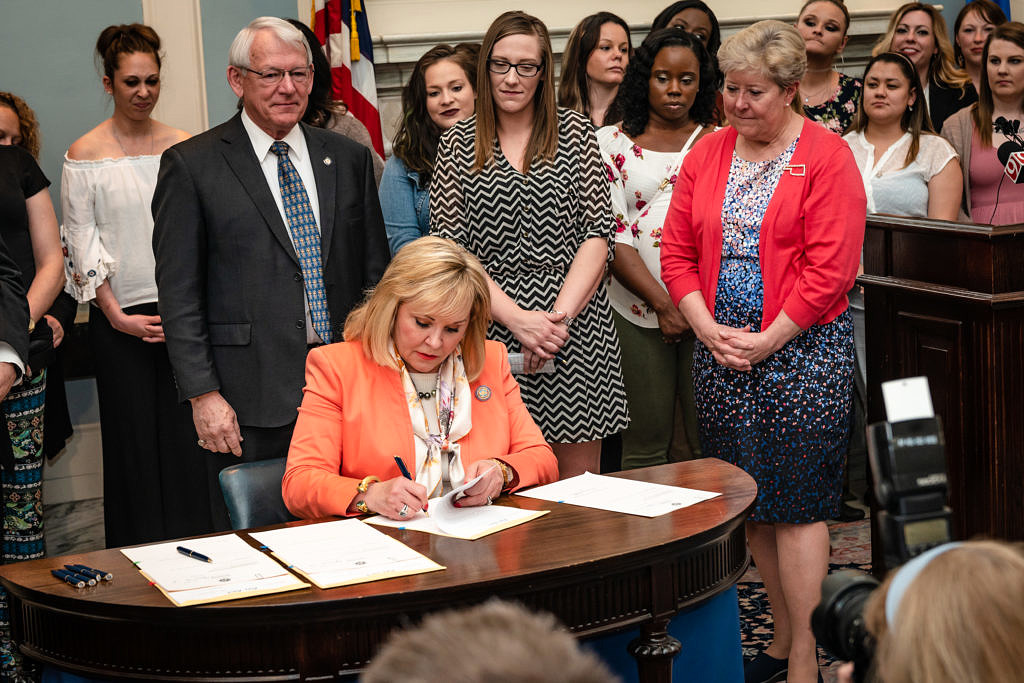
OKLAHOMA CITY – A comprehensive criminal justice legislative package recently approved in Oklahoma will curb growth in the state’s packed prisons, strengthen public safety, and help keep families together.
Governor Mary Fallin signed the seven bills into law in late April, marking a major milestone following two years of data gathering, analysis, and debate in the Legislature. Taken together, the bills are projected to avert 67 percent of the anticipated growth in Oklahoma’s prison population over the next decade, avoiding the need for 4,800 additional prison beds.
Fallin assembled the Oklahoma Justice Reform Task Force in 2016 and charged the 21 member group with analyzing the state’s prison population and developing data-driven solutions to control corrections spending while improving public safety. With technical support from the Crime and Justice Institute and its partners at the Pew Charitable Trusts, the group, consisting of key stakeholders from all disciplines within the criminal justice field, examined the drivers of Oklahoma’s prison population growth, leading research on what works to reduce recidivism, and how other states have responded to prison growth.
CJI’s Director of Policy and Campaigns Len Engel said the legislation incorporates key recommendations from the task force to address longstanding factors driving Oklahoma’s incarceration rate, which ranks second-highest in the nation.
“This package of meaningful changes to criminal justice policy will protect Oklahomans’ safety and their pocketbooks,” Engel said. “With this legislation, Oklahoma can put the brakes on out-of-control growth in its prisons by implementing policy based on data and evidence rather than anecdote and fear.”
Oklahoma’s legislative package clears a path to control growth in the prison population and builds a foundation for continued efforts to reduce that population. Oklahoma will continue to find solutions that make its communities safer and ensure that state government spends taxpayer dollars effectively, Engel said.
________________________________________________________________________________
Read More
Oklahoma governor signs major criminal justice bills
Oklahoma Legislature advances major criminal justice policies
Oklahoma governor’s task force releases massive criminal justice reform policy package
________________________________________________________________________________
For the past two decades Oklahoma has sent more women to prison per capita than any other state. Compared with other states, Oklahoma sends more nonviolent offenders to prison – 77 percent of the state’s admissions in 2017 – and keeps them there nearly twice as long as other states for most common offenses. As a result, Oklahoma prisons are packed to the brim, operating 113 percent capacity, and are understaffed, overburdened, and in deteriorating conditions.
While other states’ prison populations are declining, Oklahoma’s is increasing – up 9 percent since 2011 and projected to grow 25 percent over the next 10 years, driving up costs to taxpayers who currently spend more than half a billion dollars annually to fund the prison system.
The seven bills that comprise this package today incorporate over a dozen recommendations from the task force and reflect responses specific to Oklahoma. To address the influx of nonviolent offenders, the package expands access to alternatives to incarceration (SB 689). To allow the department of corrections to focus its limited resources on violent offenders, the package reduces draconian sentences for nonviolent offenders (SB 649) and creates release opportunities for those who pose no public safety risk (HB 2286). Lastly to reduce recidivism by providing necessary treatment and programming, the package appropriately tailors sentences to levels of conduct (HB 2281, SB 786 and SB 793) and provides opportunities for successful reentry (SB 650).
Oklahoma follows states like Louisiana, Georgia, Utah, South Carolina, and Texas, where policy changes helped limit prison population growth without jeopardizing public safety. These states adopted similar policies to what was included in Oklahoma’s package and saw reduced recidivism at a lower cost.